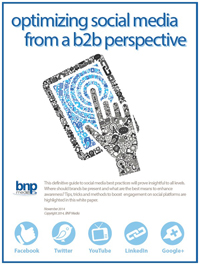In America we have created the best health-care system in the history of the world. But this “best” system faces some difficult challenges.
Employers need to rethink their health-care focus from just buying an insurance policy to incorporating a managed, data-driven health-care strategy.
As cost goes up, employers either shift it to employees or absorb the cost. This strategy is used by many employers and promoted by most benefit agents and brokers as a way to give employers a financial number they can live with. It’s financially painful for both employer and employee but easy to implement and embraced by many human-resources professionals. But as premiums go up more and more, cost is shifted to employees through higher premium contributions and higher deductibles and co-pays when they use medical services.
Another issue is, employers monitor discounts (price) but not utilization. This is like monitoring how much natural gas costs to heat your house but not how much natural gas you use. By spending a little more on insulation, you save a lot on natural gas. By spending a little on prevention, you could save a lot on health care.
Employers receive claims data reports, which are helpful, but without a plan to effect an outcome, it’s all just data. Unfortunately, health care is one of the few things in life we purchase without having a clue what it will cost, although that same quality health service can vary by hundreds and even thousands of dollars from one provider to another.
Employers also tend to focus solely on large claims, which is akin to looking in a rear-view mirror. There is no effort or strategy in place to keep healthy employees healthy so they can avoid some of those large claims altogether.
While employer-sponsored health fairs and wellness screenings offer plenty of good information, employers tell me they get low participation and it does little to encourage employees to change behavior. So, what is the solution?
Here are nine employer strategies we are sure to see in 2015.
1. Employers will be directly involved in helping manage the health-care delivery system. This will educate employees on where they can get high-quality care at the best price and will reward employees that are good consumers.
2. Employers will closely monitor utilization patterns and cost of the 25 percent of the population driving 90 percent of the cost. They will use this information to steer care away from high-cost emergency rooms to lower-cost care options through education and plan design.
3. Employers will receive executive reports analyzing trends, demographics, actionable clinical information, chronic disease reports, health-care index factors, etc. This information will help employers provide benefits that are customized to provide better preventive care and lower cost.
4. Employers will focus on Health Care Provider Process Improvement Programs and know the value of specific providers. They will look for business partners that can be a resource for their employees to help them avoid health risk rather than wait for poor health and pay for it.
5. Employers will know the health-care index of their population and focus on large claim prevention. Providing tools such as health risk assessments and wellness coaches for employees to avoid health risks puts up a strong defense against large claims.
6. Employers will implement chronic disease management programs, predictive analysis, nurse navigators, nurse practitioners and wellness coaches.
7. Employers will focus on managing the 80 percent to 90 percent of their health benefit cost, which is claims, rather than the 10 percent to 20 percent that is administrative cost.
8. Employers will look to partner with advisors who can help them manage employee health and safety risks on and off the job instead of just selling them an insurance policy.
9. Employers that make effective positive changes to the way they manage their health care will be rewarded with healthier more productive employees and lower costs for them and their employees.
For the health-care system in the United States to remain the best in the world, it is imperative for employers to develop and implement plans to better manage their health-care benefit costs without further shifting costs to employees. The time is right for employers to redirect their focus from the 10 percent to 20 percent administrative cost of their health care by just bidding and quoting their insurance to the 80 percent to 90 percent claim cost where they can not only enjoy lower cost but also employees that are healthier, happier and more productive.









